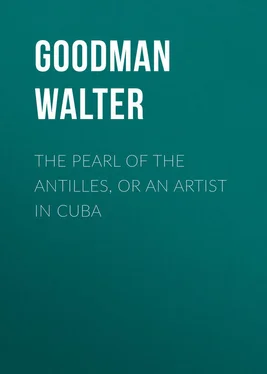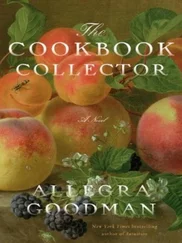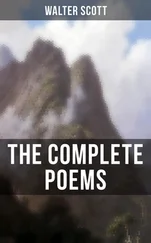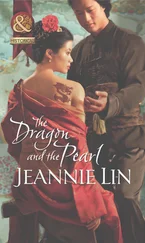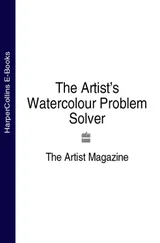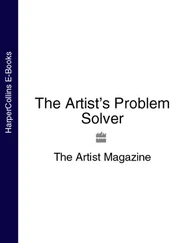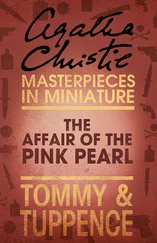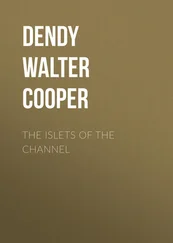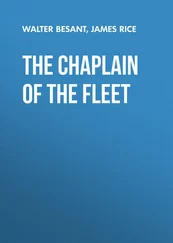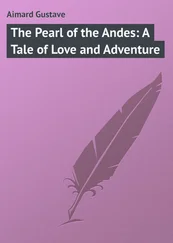Walter Goodman - The Pearl of the Antilles, or An Artist in Cuba
Здесь есть возможность читать онлайн «Walter Goodman - The Pearl of the Antilles, or An Artist in Cuba» — ознакомительный отрывок электронной книги совершенно бесплатно, а после прочтения отрывка купить полную версию. В некоторых случаях можно слушать аудио, скачать через торрент в формате fb2 и присутствует краткое содержание. Жанр: foreign_antique, foreign_prose, Путешествия и география, на английском языке. Описание произведения, (предисловие) а так же отзывы посетителей доступны на портале библиотеки ЛибКат.
- Название:The Pearl of the Antilles, or An Artist in Cuba
- Автор:
- Жанр:
- Год:неизвестен
- ISBN:нет данных
- Рейтинг книги:4 / 5. Голосов: 1
-
Избранное:Добавить в избранное
- Отзывы:
-
Ваша оценка:
- 80
- 1
- 2
- 3
- 4
- 5
The Pearl of the Antilles, or An Artist in Cuba: краткое содержание, описание и аннотация
Предлагаем к чтению аннотацию, описание, краткое содержание или предисловие (зависит от того, что написал сам автор книги «The Pearl of the Antilles, or An Artist in Cuba»). Если вы не нашли необходимую информацию о книге — напишите в комментариях, мы постараемся отыскать её.
The Pearl of the Antilles, or An Artist in Cuba — читать онлайн ознакомительный отрывок
Ниже представлен текст книги, разбитый по страницам. Система сохранения места последней прочитанной страницы, позволяет с удобством читать онлайн бесплатно книгу «The Pearl of the Antilles, or An Artist in Cuba», без необходимости каждый раз заново искать на чём Вы остановились. Поставьте закладку, и сможете в любой момент перейти на страницу, на которой закончили чтение.
Интервал:
Закладка:
A procession, consisting of upwards of seventy mourners, follows on foot the richly-gilded and ornamented hearse. Everybody is attired in the deepest mourning, which, as fashions in Cuba go, includes a tall beaver hat adorned with broad crape, a black cloth coat and white trousers. The hired mutes, however, present a more sombre appearance, for not only are their habiliments black, but also their faces and bare hands; mutes in Cuba being represented by negroes of the darkest shade.
The funeral procession now leads on in the direction of the cathedral, where mass for the dead is to be performed. Those who do not care to enter the sacred edifice will light their cigars and cigarettes, and will employ the interval which elapses before the burial service is over, by strolling about the neighbourhood, and chatting with acquaintances at their grated windows.
Service being over, the funeral will proceed to the cemetery at St. Ana's. Arrived at the gates of the burial ground, everybody will return home without waiting for the interment, which in Cuba is performed by a couple of black sextons who, unattended by either priest, mourner, or any other person, lower the remains into the hole which has been dug for it!
CHAPTER V.
CUBAN MODELS
My companion has a weakness for bird-painting, and it pleases him to have the living originals on the premises. Therefore does our spacious court-yard contain a goodly collection of the feathered tribe, with one or two animals without feathers. A large wirework aviary is filled with fifty specimens of tropical birds with pretty plumage and names hard to pronounce. A couple of cocos – a species of stork, with clipped wings – run freely about the yard, in company with a wild owl and a grulla, a tall crane-like bird five feet high. In a tank of water are a pair of young caymanes, or crocodiles. These interesting creatures are still in their infancy, and at present measure only four feet six inches from the tips of their hard noses to the points of their flexible tails. We have done our best to tame them; but they have not yet fallen into our domestic ways. Nor does time improve their vicious natures, for at the tender age of six months they have already shown signs of insubordination. If they persist in their evil courses we must needs make a premature end of them, which is no easy matter, for their scaly hides are already tough as leather, and the only indefensible parts about them are their small eyes and open mouths.
The Cocos, male and female, are meagre-bodied birds, with slender legs, and beaks twelve inches long. They are an inseparable couple, and wander about our patio and rooms in a restless nervous fashion, rattling their chop-stick noses into everything. Now they are diving into the mould of flower-pots for live food, which they will never swallow till it has been previously slain. One of them has espied a cockroach in a corner, and in darting towards the prey a scorpion crosses its path. The venomous reptile hugs the belligerent beak in the hope of conveying to it some of its deadly sting; but the tip of Coco's horny appendage is a long way from his tender points, and Scorpio must travel many an inch before he can make the desired impression. Meanwhile the stork has teased Scorpio's life out, and jerked his remains into that bourn whence no defunct reptile returns. Our Coco's chief delight is to play with our painting materials, where much amusement may be derived by upsetting a bottle of varnish, or by distributing our long brushes in various parts of the room.
A fund of entertainment is found in the displacement of every object not too weighty for Coco to convey. Thus, when a wineglass or a small coffee cup is missing, it will be discovered in the most unlikely spot, such as the balcony, on the roof, or maybe in our neighbour's dusthole. By Coco's sleight of beak , slippers part company and invite us to hunt for them, as if we were playing a certain old-fashioned game. As for the spoons, knives, and forks – they are disseminated everywhere like seeds in a ploughed field.
Has anyone seen my inkstand?
Yes; it has caught Coco's eye, and it has consequently been caught up by his chop-stick beak. With the agility of a sprite, he had hopped upon my open writing-desk, and having duly overhauled the contents and carefully transplanted each particular sheet of paper, envelope, pen and pencil, he devotes his attention to the ink; half of which he must surely have imbibed, for his beak remains parti-coloured for many days, and the inkstand, which I discover on the first fine 'retreta,' reposing within my best beaver hat, is perfectly empty!
To their credit, be it said, the two Cocos – male and female – never for an instant part company. Where one trips, there trips the other. If Señor Coco starts off on any important enterprise, his Señora gives a croak expressive of her readiness to follow, and is after him like his own shadow. Similarly, when la Señora Coco dives into the depths of an old boot in quest of emptiness, her lord assists at the investigation.
Once only, my Lady Coco is missing; having wandered from the house, and lost herself in an adjacent field. Until her reappearance, Lord Coco is inconsolable. The pastimes of the studio and the patio have no attractions for the bereaved bird. He fasts during the day, and croaks dismally at night. But when the prodigal at last returns, Lord Coco is quite another bird, and in a moment of rapture he secretes our last tube of flake white in the water-jug!
The majestic Grulla is a better behaved bird. There is a dignity about her walk, and a formality about her ways, which are examples to her feathered companions. At night she is as serviceable as the best watch-dog, warning all trespassers by her piercing shriek, and by a furious dash at them with her strong neck and sharp-pointed beak. Grulla abominates all new-comers, and it was long before she was reconciled to the presence of her crocodile companions. When first their objectionable society was thrust upon the huge bird, she became nearly beside herself with vexation, and made savage onslaughts on the invaders' impenetrable hides. Once Grulla was in imminent danger of losing her neck whilst taking a blind header at the enemy's beady eye; for in a moment the reptile opened his yard of jaw for the easy accommodation of the bird's three feet of throat. My lady's behaviour at table leaves nothing to be desired. At the dinner hour she strides into our apartment without bidding, and takes her allotted place. The bird's two feet six inches of legs serve her instead of a chair, and her swan-like neck enables her to take a bird's-eye view of the most distant dish. But she never ventures to help herself to anything till the meal is actually placed on the plate before her; nor does she bolt her food like a beast, but disposes of it gracefully, like the best educated biped. Jerking the article for consumption neatly into her beak, and raising her head high in the air, she waits till the comestible has gravitated naturally down her throat. The Grulla's favourite dishes are sweet bananas, boiled pumpkin, and the crumb of new bread; but she is also partial to fresh raw beefsteak whenever she can get it.
Everybody has his likes and his dislikes. Some people cannot abide a pig, and Grulla's antipathy is a big Aura.
An Aura is a vulture which sails gracefully over every Cuban town in quest of prey. The Aura is an invaluable bird in the tropics; the dead carcases of animals being by its means cleared away in a few hours. Its services are, in this respect, rated at so high a value that it is considered an illicit act to slay one of these useful scavengers of the air, and a heavy fine is imposed on the slayer.
Читать дальшеИнтервал:
Закладка:
Похожие книги на «The Pearl of the Antilles, or An Artist in Cuba»
Представляем Вашему вниманию похожие книги на «The Pearl of the Antilles, or An Artist in Cuba» списком для выбора. Мы отобрали схожую по названию и смыслу литературу в надежде предоставить читателям больше вариантов отыскать новые, интересные, ещё непрочитанные произведения.
Обсуждение, отзывы о книге «The Pearl of the Antilles, or An Artist in Cuba» и просто собственные мнения читателей. Оставьте ваши комментарии, напишите, что Вы думаете о произведении, его смысле или главных героях. Укажите что конкретно понравилось, а что нет, и почему Вы так считаете.
